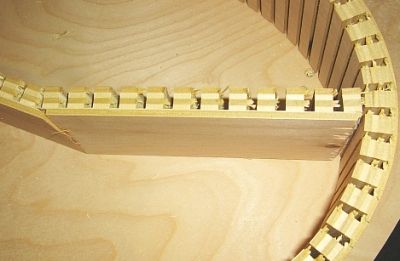Question
Can you more experienced folks weigh in on the accuracy of a good vertical panel saw (Streibig Compact, etc.) or high-end slider compared with a heavy duty CNC? I'm increasingly subbing out my panel processing, and most recently almost exclusively to a CNC. The dimensions off that machine are dead-on in every way, every time. I've never measured a panel even 1/64th out of square (the approximate limit of measuring accuracy of my Stanley FatMax!). I guess I shouldn't be surprised.
What was a little surprising to me is that I would routinely measure large panels out of square 1/32 to a light 1/16" coming off the top-of-the-line Striebig. Operator error? Machine calibration? Who knows... But I'm thinking if it can happen to that guy, it can probably happen to anyone. It's the apparent crap-shoot nature (or at least calibration-dependent nature) of the non-CNC accuracy that irks me. As soon as I don't have 100% confidence in a given panel's squareness, which leads to not having 100% confidence in a box's squareness, then that's a pretty significant fly in the ointment. As soon as I hang a CNC-squared door on my non-CNCed box and discover (after finishing, of course) that my reveals are tapered, well that's a big bummer.
So, am I correct in saying that there's CNC and then there's everything else? Accuracy on the order of 1/32 might seem picky, but with frameless or inset-framed construction and 2mm reveals, am I crazy to think that it is that critical?
I'm guessing an explanation for the CNC's extra accuracy may be that the CNC's cutter isn't referencing off of the panel's edge resting on a set of rollers or pushed up against a fence in the case of the slider. After all, couldn't there always be a bit of dust knocking that panel/fence interface out of parallel? Isn't the CNC the only method where that opportunity for error is eliminated?
Forum Responses
(Cabinetmaking Forum)
From contributor M:
I sub some items out to another cabinet shop that has a Thermwood, like MDF doors, raised panel arches, etc. I think that a CNC router is the most amazing thing that I have ever seen, and if you were at IWF in Atlanta, you know what I mean. Everything that I have had cut CNC has been flawless, period.
All of our machines that have a hard stop find a way to become inaccurate over time and it's my belief that is the norm. If you cut your panels on the CNC from full sheets (nested), this is not a problem, but if you cut them on the saw (finished size) and send them to CNC, you will have problems for the same reasons saws have problems - reference points migrate or get bent over time. Keeping the reference points correct is the key to accuracy. Most saws can be adjusted with ease, but this is not the case with CNCs. If your CNC works properly, you will get more accurate panels hands down, but you can achieve this from a panel saw if you stay on top of it.
When we did not take the time to do the stress relief cut on sheet goods with a lot of stress in them, our rips looked a lot like bananas, and ultimately our parts were not square or accurate, so we always elected to do the stress relief cut when we had sheet goods with excessive stress in them (nothing but pure waste or burning daylight, but necessary in the absence of CNC equipment).
